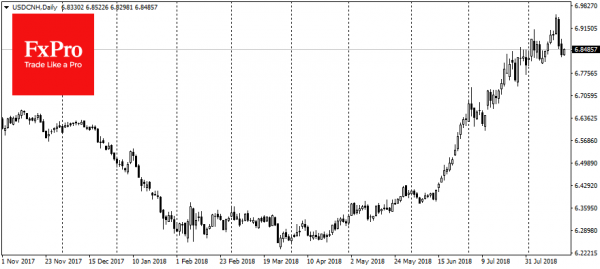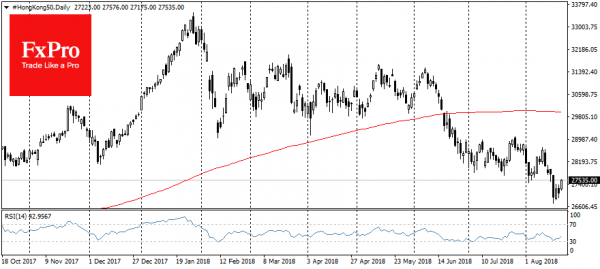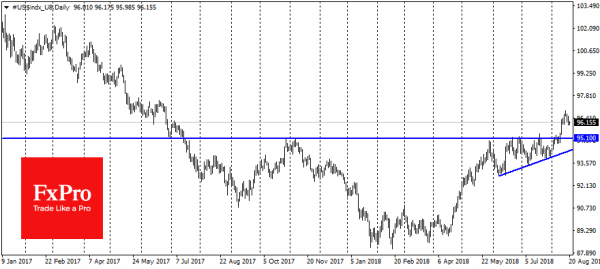Asian bourses remain moderately optimistic since the end of last week. Expectations are encouraging that the Chinese and Turkish authorities should be able to find economic support measures and stabilise the exchange rates of their currencies. Beijing defended its currency from a decline to 7.0 for the dollar last week, and also already offered to the US a meeting for trade negotiations this week.
As a result, Asian markets add about 0.3% this morning and CNH traded on 6.84, below last Wednesday peak near 6.96. Turkish lira has stabilised near 6.0 for Dollar from the end of trading on Friday, despite the decline of sovereign ratings from S&P and Moody’s. 
Most likely, the deterioration of ratings will exert additional pressure on Turkish assets in coming days. Turkish authorities bought some time with promises of decisive steps, but in most cases the outflow of investors from the country’s assets continues for several months, even if the authorities manage to contain panic. Most likely the “bottom” of the Turkish crisis is just ahead.
Players on the dollar, however, fixed the profit from the previous strengthening of the American currency. The dollar index lost 0.9% in the second half of the week, more than half of which had to be on Friday. However, this week markets focus will shift on the comments from developed countries central banks.
In particular, this week the Fed and ECB will publish their previous meetings minutes. Also at the end of the week attention will be focused on Powell’s comments as part of the central symposium at Jackson Hole. Fresh assessments of recent developments on EM can have a serious impact on the dollar, as investors will be able to look at how this would affect the Fed’s plans.
The latest episode with the markets of developing countries is a clear indication of the fragility of the markets currently and the vulnerability of the world economy to a further slowdown. If the Fed continues to focus only on internal indicators, it can lay the groundwork for a new wave of outflow from developing countries and develop the current momentum of strengthening the dollar by making it a safe-haven asset in times of turbulence in markets.














